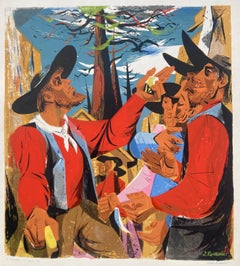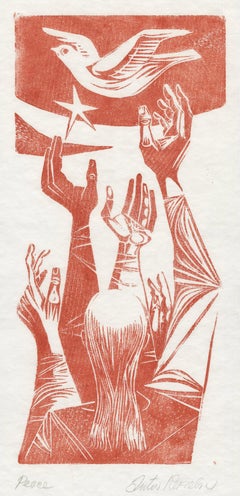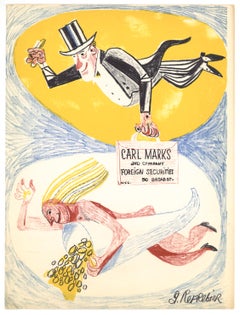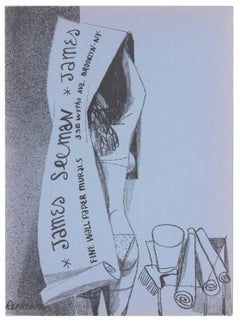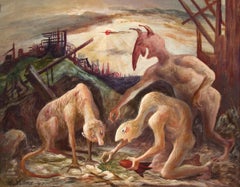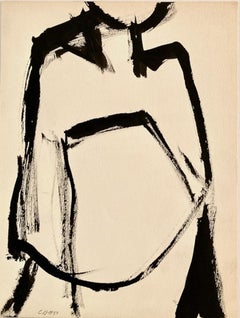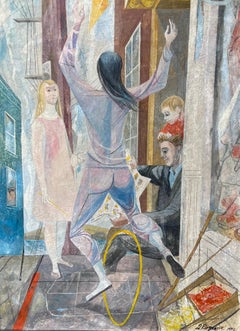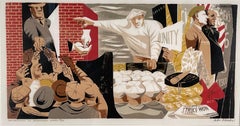Anton Refregier Art
Anton Refregier was a painter and muralist active in Works Progress Administration Federal Art Project commissions, and in teaching art. He was a Russian immigrant to the United States. He is known, among other works, for his mural The History of California located in the Rincon Center, in downtown San Francisco, California. It depicts the state's history across 27 panels that he painted from 1940–48. The style of this historic mural had many of Refregier's key characteristics. The palette was composed of yellows, browns, and grays, punctuated by red in certain areas to evoke emotion. Earthy tones and the lack of bright colors remind viewers of the struggles and hardships he is depicting. Refregier also uses white to represent virtue in those inspired by a cause. His style is very flat and one-dimensional. Refregier uses solid blocks of color to denote shadows, along with depth and shade. His painting style appears to be very rudimentary and simple, but complex because of the way he uses color to evoke emotion and powerful images to tell a story. Refregier died in 1979 while in Moscow. Refregier was working on a mural for a medical center in his home city. The same year, his Rincon Mural was placed under the protection of the National Register of Historic Places.
1940s American Modern Anton Refregier Art
Screen
1940s American Modern Anton Refregier Art
Charcoal, Gouache, Board, Pencil
1950s American Modern Anton Refregier Art
Oil
1950s American Modern Anton Refregier Art
Woodcut
1950s Anton Refregier Art
Lithograph
1950s Anton Refregier Art
Lithograph
1960s American Modern Anton Refregier Art
Canvas, Oil
1950s Anton Refregier Art
Lithograph
1950s Anton Refregier Art
Lithograph
1950s Anton Refregier Art
Lithograph
1950s Anton Refregier Art
Lithograph
1940s American Modern Anton Refregier Art
Oil, Board
Mid-20th Century American Modern Anton Refregier Art
Gouache
Early 20th Century American Modern Anton Refregier Art
Oil
Mid-20th Century American Modern Anton Refregier Art
Gouache
Mid-20th Century American Modern Anton Refregier Art
Gouache
Early 20th Century American Modern Anton Refregier Art
Handmade Paper, Etching, Drypoint
Mid-20th Century American Modern Anton Refregier Art
Gouache
1940s American Modern Anton Refregier Art
Oil, Panel
Mid-20th Century American Modern Anton Refregier Art
Gouache
1970s Abstract Anton Refregier Art
Lithograph
1950s American Modern Anton Refregier Art
Lithograph
1970s Abstract Anton Refregier Art
Lithograph
1950s American Realist Anton Refregier Art
Masonite, Oil
1940s Anton Refregier Art
Screen
1930s American Modern Anton Refregier Art
Paper, Pencil
1960s American Modern Anton Refregier Art
Oil Pastel, Archival Paper
1950s American Modern Anton Refregier Art
Ceramic, Plaster, Wood, Masonite
1930s American Modern Anton Refregier Art
Lithograph
1930s American Realist Anton Refregier Art
Canvas, Oil
